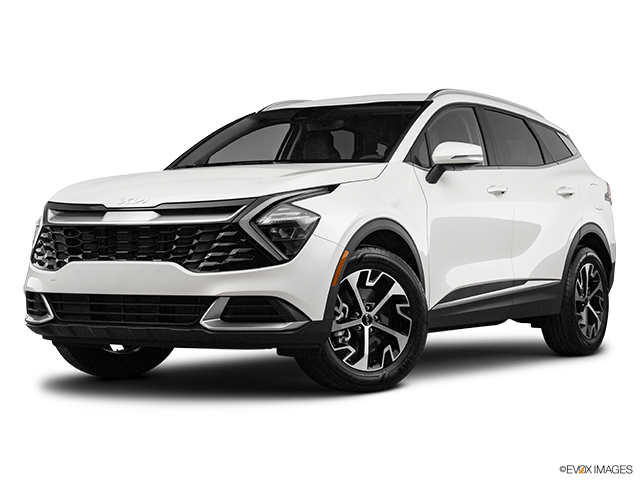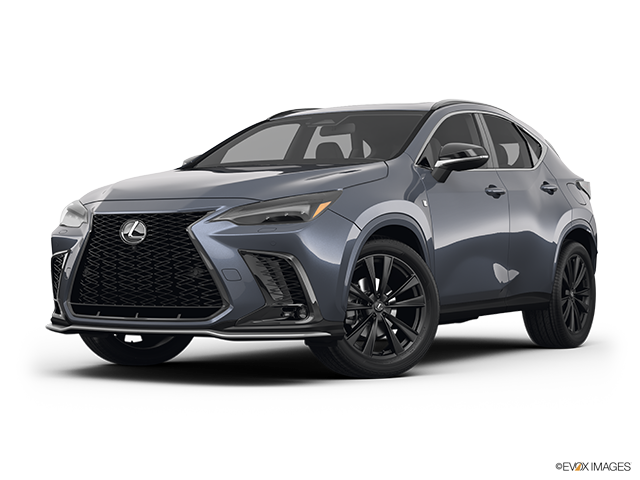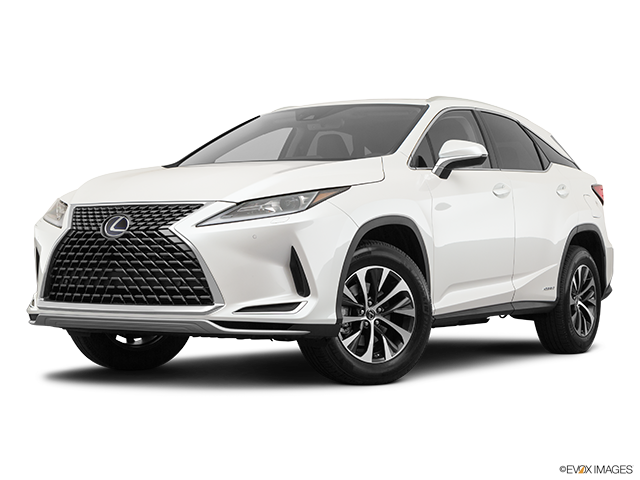Price MSRP
$41,499

Efficiency
2.3 Le/100km
Power Source
Plug-in Hybrid Electric Vehicle
The Ford Escape remains unchanged mechanically for 2025, but receives a number of updates to its features and trim. This compact five-seat SUV offers two engines, as well as a hybrid and a plug-in hybrid (PHEV). It shares its platform with the Bronco Sport SUV and Maverick compact pickup truck, and comes in front-wheel drive (FWD) or all-wheel drive (AWD).
Competitors to the 2025 Ford Escape
Who doesn’t make a compact SUV these days? If you’re cross-shopping the Escape, you need to look at a long lineup that includes the Chevrolet Equinox, GMC Terrain, Honda CR-V, Hyundai Tucson, Kia Sportage, Mazda CX-5 and CX-50, Mitsubishi Eclipse Cross, Nissan Rogue, Subaru Forester, Toyota RAV4, and Volkswagen Atlas Cross Sport.
What’s new with the Ford Escape for 2025?
The 2025 Ford Escape has a long list of tweaks to its trims. On the base Activ trim, a new Premium Tech Package adds such items as adaptive cruise control with driving assist, premium stereo, navigation, and larger centre screen. That trim also adds an available power liftgate; standard black window surround; black and silver rear bumper; and standard six-way manual driver’s seat.
A space-saver spare tire is now included on the hybrid and PHEV, and can be added to other trims in place of their tire sealant kit. Leather-look quilted and perforated seats are available on upper trims. There are some deleted items, too: A 360-degree camera with split view is no longer standard on the ST-Line Elite and Platinum; active parking assist isn’t included in premium packages on the ST-Line Elite, Platinum, or PHEV; and no-longer-available items are rain-sensing wipers, ambient lighting with floor lighting, and the rear cargo 12-volt power outlet. For exterior colours, Space Silver Metallic is added, while Iconic Silver Metallic and Race Red are retired.
2025 Ford Escape Performance
The 2025 Ford Escape in the Activ and ST-Line trims uses a 1.5L three-cylinder engine with turbocharging – Ford calls this EcoBoost – making 180 horsepower and 199 lb-ft of torque. The ST-Line Select, Platinum, and ST-Line Elite swap that for a 2.0L EcoBoost four-cylinder making 250 horsepower and 280 lb-ft of torque. Both engines use an eight-speed automatic transmission.
All but the base Activ can be optioned with a self-charging hybrid system, which uses a 2.5L four-cylinder making 163 horsepower and 155 lb-ft of torque on its own, and up to 192 horsepower when gasoline and electricity work together. The Escape PHEV is its own trim, and uses that hybrid system but creates up to 210 horsepower combined and can drive on electric-only for a rated 60 km when plugged in and charged. Both hybrid systems use an automatic continuously variable transmission (CVT).
The Activ and ST-Line come in FWD or AWD, and that includes the ST-Line with its optional hybrid system; while the ST-Line Select, Platinum, and ST-Line Elite are exclusively AWD, including when equipped as a hybrid. The PHEV is FWD-only.
In a review of the 2023 Ford Escape, Justin Pritchard said, “Out on the road I noted good control over body motions and harshness on uneven roads, and a smooth and relaxed highway glide. The ride is comfortable, with a helping of sporty feedback dialed in from the suspension when encountering undulations in the road. If you’re after something that’s, say, relaxing but also responsive, this should do the trick. On smooth highways, drivers can expect noticeable but not intrusive levels of road noise to arrive by about 95 km/h, with wind noise nicely managed until a little beyond 110 km/h. In most driving, there’s no difficulty relaxing in a quiet cabin or talking with nearby passengers without raising your voice.”
2025 Ford Escape Efficiency
The base Escape with 1.5L and FWD is rated by Natural Resources Canada (NRCan) at 8.9 L/100 city, 6.9 highway, and 8.0 combined. Adding AWD increases the combined figure to 8.4 L/100 km. With the 2.0L and its standard AWD, the rating is 10.2 city, 7.6 highway, and 9.1 combined. Both take regular-grade, 87-octane gasoline.
In FWD or AWD, the Escape Hybrid rates 5.6 city, 6.5 highway, and 6.0 combined. The Escape PHEV has an electric-only range of 60 km when charged, and when that depletes, it reverts to conventional hybrid operation. In that, it’s rated at 5.6 city, 6.3 highway, and 5.9 combined. When running on its charged battery alone, it’s rated for 2.3 Le/100 km, and that’s for litres equivalent, the electric energy comparison to gasoline energy.
2025 Ford Escape Safety
Although the U.S. National Highway Traffic Safety Administration (NHTSA) hasn’t yet rated the 2025 Ford Escape, it also hasn’t changed from the 2024 model, and that one got the top five-star rating in crash testing. At the Insurance Institute for Highway Safety (IIHS), the 2024 model got the highest “Good” in almost all tests, including the updated front crash that now assesses potential injury to a rear-seat passenger as well as to those in the front. However, in the updated side crash – which better simulates being struck by a large SUV – it rated “Marginal.” It also earned “Acceptable,” the next-step-down from “Good,” for its headlight performance; and “Marginal” for the performance of its emergency front braking for a vehicle in front.
Standard or optional driver-assist features, depending on the trim, include adaptive cruise control, blind-spot monitoring with rear cross-traffic alert, evasive steering assist, lane-keep assist, emergency front braking, rear parking sensors, and post-crash alert system.
2025 Ford Escape Reliability
Consumer Reports gave the 2024 Ford Escape a reliability rating of just 38/100, saying it expects it to be “less reliable than the average new car,” based on the 2021 and 2022 models plus Ford’s brand score. The Escape didn’t win an individual award in the J.D. Power 2024 U.S. Vehicle Dependability Study, which looks at three-year-old vehicles, and Ford ranked 23rd out of all automakers, twelve steps below the industry average.
2025 Ford Escape Interior
The base Activ trim includes such items as dual-zone climate control, push button start, eight-inch digital instrument cluster, USB-A and USB-C charging ports, and eight-inch centre touchscreen with wireless Apple CarPlay and Android Auto. Upper trims can add such items as a 12.3-inch cluster, 13.2-inch centre touchscreen, wireless charger, auto-dimming mirror, panoramic sunroof, heated seats and steering wheel, B&O premium audio, navigation, and 10-way driver and six-way passenger power seats.
In a review of the 2023 Ford Escape, Justin Pritchard said, “Opening the door to the updated interior, I wasn’t sure where to look first: the quilted leather seats, or perhaps the more than 13-inch-wide display screen — a huge visual that communicates the Escape’s goal of delivering a driving environment that’s relaxing and upscale, but also that puts plenty of tech within reach.”
2025 Ford Escape Dimensions
The 2025 Ford Escape has an overall length of 4,574 mm (180.1 inches). Front legroom chimes in at 1,076 mm (42.4 inches), while rear-seat passengers get a generous 1,033 mm (40.7) of maximum leg space. Cargo capacity is 1,062 litres with the rear seats up, and 1,852 litres when they’re folded. The hybrid and PHEV can tow up to 1,500 lbs; the 1.5L engine up to 2,000 lbs; and when properly equipped, the 2.0L can go as high as 3,500 lbs.
2025 Ford Escape Pricing
The base Activ starts at $31,949, with the next-step-up ST-Line at $33,949, and it’s $2,600 to equip either of those with AWD. The ST-Line can be optioned with a hybrid powertrain for $6,000, and then add that $2,600 if you want that hybrid to be AWD too.
The ST-Line Select starts at $39,049; the Platinum at $41,299; and the ST-Line Elite at $42,799. All of those come only with AWD, and it’s an additional $4,000 in each to add a hybrid powertrain. The Escape PHEV, in FWD only, starts at $43,999.



















